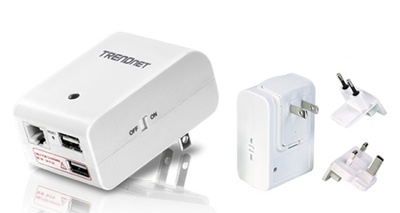By Rick Sutcliff
The Lion no longer sleeps tonight but has been released. This update will perhaps go a little more slowly than some, because of the large number of applications out there that require Rosetta to run under OS X — an option no longer available under Lion.
The Spy himself has some such, and they have conveniences and/or functionality that has not yet been provided in newer applications. Besides, he has other fish to fry. How times have changed since he was a beta-testing, high risk adopter. The latest cat is not a high priority for him. Indeed, he has more interest in keeping his iPod Touch up to date with the latest and greatest, and has become far more conservative with his main work platform, where he needs rock solid stability with a suite of applications that do the job, and never fail.
Meanwhile, back at the financial statement,Apple recently released yet another quarterly result that blew away both their own guidance, and the most enthusiastic analysts’ estimates. That hundred billion in cash the Spy was forecasting a few months back looks to come true one quarter sooner than he expected.
Given these earnings, even the sovereign debt-driven problems of the general stock market cannot weigh heavily on Apple’s stock price and therefore market cap. Look for Apple to exceed Exxon as the world’s largest capitalization within the next two quarters (sooner if the general market recovers quickly). Currently, the score is $416 to $374 (billion of course) so the gap is not very large.
Apple is now the market maker in iPads (there is no notebook segment), the market leader in smartphones, and running third to sixth (depending on the region) in computers, with far more residual mindshare than sales share, indicating that its dominance will yet increase substantially. The company is a tempting target for competitors, patent trolls, and possibly some day, if it falls out of favour with the politicos, antitrust action, but no longer could be taken over, and very resistant to problems.
Yes, a product stumble would probably sent the share price down temporarily, but would have little long-term effect. That price, by the by, touched $400 for the first time recently (up from under $6 not that many years ago), and when the present Washington debt talks get settled, will likely go well over that mark, perhaps to stay for some time. (This is not market advice, merely a “how things have changed” comment.)
By taking the lead in the consortium that won the Nortel patent auction, Apple has apparently signaled a willingness to spend some of that cash, at least in very strategic and targeted ways. This purchase makes much sense in the light of the countless lawsuits over alleged patent violations now going on, some of which involve Apple. It means there are several thousand fewer potential excuses to sue iSteve’s little company, and the expenditure is worth it for that reason alone.
There may even be some patents in that treasure trove that the company actually wanted for the sake of future projects. After all, most are in the telecommunications and networking realm. And, if Apple is serious about the idea of the IP represented by these patents, perhaps one of the next steps will be to expand R&D, so as to generate its own trove of patents, as has IBM over the years.
Look for a few more purchases now that the purse strings have been loosened a little — but if a live company is the target, expect it to be in intellectual property (like this one) or media content and provision, rather than in either hardware or software per se. The Spy has speculated about Apple becoming a television manufacturer, possibly by purchase, but another interesting possibility would be the enterprise service provision business.
Who is the biggest player there? IBM. Would the kind of marriage being bruited about when Apple was seen as “on the ropes” make more sense today? Perhaps. After all, Big Blue is no longer in competition, but runs a complementary business. Would anti-trust regulators allow such a union? Probably not, however felicitous the fit. More likely and acquisition–how about a telecom provider and a satellite network to carry the content on all those servers Apple has? Hmmm.
A low tech rant seems in order in view of the Spy’s recent experiences with same. His son and family recently bought a house — a real fixer upper, but in a respectable thirty-five-year-old neighbourhood. Like all such, it could have been in good condition even after those years, had it been well maintained. A big “if.”
Well, they knew it hadn’t — there was rot in two walls of an addition made by enclosing a porch, and beneath basement windows that had evidently leaked at one time. This they knew and had accounted for. (Always get a house inspection, even if your mortgage lender does not require it.)
But in tearing apart basement walls to fix this, it quickly became evident that renovations had been done over the years without much knowledge of the technology — not just the unsupported posts trying to hold up that addition, but also of the electrical wiring. Enter the Spy, who has a modest knowledge of such things, having twice built his own house, done the wiring under homeowner’s permits, and even had one of his innovations make it into the following edition of the Canadian electrical code after the head inspector (who happened to be on the rules committee) assigned himself to look things over and liked what he saw.
At the time, the neighbour across the street had a pro do his electrical plant, the job was approved from the office without a site visit, and he ended up having an electrical fire because of sloppy work. On his second house, the Spy subcontracted the rough wiring, and the apprentices assigned to the job created two dead shorts and one overloaded circuit that he had to fix.
Well, yes, but he digresses. Here is a small list of things one must not do (seen them all):
° Employ non- approved (CSA or UL) or used boxes, switches, outlets, wire, connectors, staples, or other components.
° Exceed the design capacity of the main load centre. If you expand your house, the main breaker box may need to be updated. In new construction, ignore the naysayers and install a 200A service from the start, with a 100A sub panel either underneath the kitchen or at the opposite side of the house, and a 45A sub panel in the garage.
° Employ aluminum wire for any circuits (even where it is allowed). It is not as good a conductor, breaks too easily, and is hard to join to copper correctly.
° Hide a junction box in a closed wall or ceiling. They must remain accessible.
° Just twist and tape a joint. Use a proper connector.
° Make a joint in the wall rather than in a box. Yikes!
° Use too small a wire size on a circuit or exceed the wire capacity with too large a breaker. This is a fire waiting to happen.
° Put more than 12c(number may be lower per local rules) outlets and/or lights on a circuit. The wire can only carry so much current. The Spy has seen amateurs load a circuit willy-nilly with up to thirty-three items.
° Exceed the wire and cap capacity of a box. Shallow boxes (164 cubic centimetres or less) may be limited to a single pair entering and none leaving.
° Leave behind no longer used live wires dangling inside a wall.
° Neglect to bond the bare wire to the grounding screw of the box, to all other bare wires in the box, and to the terminal on a duplex outlet. Omitting any of these can kill you.
° Reverse the neutral and hot (white and black) wires on an outlet. A polarized plug is that way for a reason. The outlet is clearly marked with both words and a colour code. Can’t you read? Is electrocution really the way you want to go out of this life?
° Fail to use vapour barrier enclosures around boxes in exterior walls. They leak cold air, collect moisture, and corrode.
° Include a refrigerator, microwave, kitchen appliance circuit, kitchen eating area circuit, stove receptacle, built-in-vacuum, pump, furnace, or like high load on the same circuit as anything else.
° Fail to provide arc fault protection for bedrooms or GFI outlets for wet areas. You cannot do this in an obsolete breaker box, by the way, as these newer breakers are not provided for old retro-fits.
° Max out a heating circuit. The resistance of copper wires slowly increases with time, and the carrying capacity diminishes. It also diminishes if two such wires are run side by side for any length. 3000 Watts is plenty for one circuit, but check what breakers are allowed for what wire, and stay well within the calculated wattage, even if the rules allow a 100% load. Local codes may vary.
° Fail to keep a detailed and up-to-date map of the wiring system. You need to know exactly what breaker protects every light and outlet.
° Fail to take out a permit and have the work inspected. This is not a government revenue issue. It matters for safety, for your insurance, for your children, and for all subsequent owners of the house.
With respect to wiring appliance circuits in a kitchen, the old rule (use double breakered three-wire 240 volt circuits, and split no more than two non-adjacent duplex outlets) has been supplemented with a new rule for outlets within a “GFI zone” of the kitchen sink. In such locations, one may either use a single GFI outlet on a 15A circuit, or two GFI outlets on a 20A circuit.
The Spy understands the motivation behind this rule, but feels that it is a temporary patch to cover off an unsatisfactory manufacturing situation — namely that two-pole GFI breakers are too expensive to mandate. What we really need is splitable GFI outlets with two detectors, one for each side, both operating the mechanical trigger. These could be made for pennies more than the current outlets, and then we could go back to the old rule requiring split outlets, which maximizes safety and minimizes the risk of overload.
Finally, the Spy notes that many fires are caused by grow-ops set up to overload the power draw. He supposes that if people are dumb enough to run such operation, they are also ignorant of the physics. Simply put, a wire is like a pipe. It can carry only so much electricity. Try to force more through and it resists. This causes heat, which increases the resistance further. A fire is now a matter of when, not if.
The bottom line: cut corners with your wiring, and you may end up cutting corners with your life. We’re not talking 3V milliamp circuits here, folks. Rant over.
That’s a wrap for this month, and a very busy one it has been. It is now that month for which Octavius stole a day from February so the one bearing the new name the senate voted him would not be shorter than big Julie’s. In view of that, let the back-to school sales begin.
–The Northern Spy
Opinions expressed here are entirely the author’s own, and no endorsement is implied by any community or organization to which he may be attached. Rick Sutcliffe, (a.k.a. The Northern Spy) is professor and chair of Computing Science and Mathematics at Canada’s Trinity Western University. He has been involved as a member or consultant with the boards of several organizations, including in the corporate sector, and participated in industry standards at the national and international level. He is a long time technology author and has written two textbooks and six novels, one named best ePublished SF novel for 2003. His columns have appeared in numerous magazines and newspapers (paper and online), and he’s a regular speaker at churches, schools, academic meetings, and conferences. He and his wife Joyce have lived in the Aldergrove/Bradner area of BC since 1972.
Want to discuss this and other Northern Spy columns? Surf on over to ArjayBB.com. Participate and you could win free web hosting from the WebNameHost.net subsidiary of Arjay Web Services. Rick Sutcliffe’s fiction can be purchased in various eBook formats from Fictionwise, and in dead tree form from Amazon’s Booksurge.
URLs for Rick Sutcliffe’s Arjay Enterprises:
Arjay Books: http://www.ArjayBooks.com
The Northern Spy Home Page: http://www.TheNorthernSpy.com
opundo : http://opundo.com
Sheaves Christian Resources : http://sheaves.org
WebNameHost : http://www.WebNameHost.net
WebNameSource : http://www.WebNameSource.net
nameman : http://nameman.net
URLs for Rick Sutcliffe’s books:
Booksurge: http://www.booksurge.com
Fictionwise: http://www.fictionwise.com






